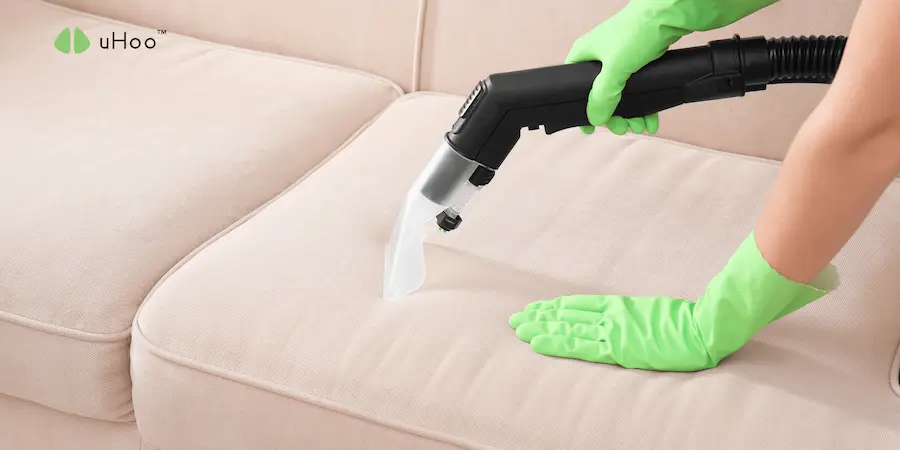Our beloved sofas, armchairs, and other upholstered furniture are the heart of our living spaces, offering comfort and style. However, they can also become silent traps for lingering odors and dulled vibrancy. Whether it’s the faint aroma of last night’s takeout, the lingering scent of pets, or simply the dulling effect of accumulated dust and grime, your upholstery can often benefit from a refreshing boost.
Here’s your guide to banishing unwanted smells and restoring that like-new vibrancy to your favorite pieces.
Step 1: The Initial Airing Out
Before diving into cleaning solutions, give your furniture a chance to breathe. Open windows and allow fresh air to circulate around the upholstered pieces. This simple step can often dissipate mild, lingering odors naturally. You can even place a fan nearby to encourage airflow.
Step 2: The Thorough Vacuuming Foundation
Just like with carpets, a thorough vacuuming is crucial. Use the upholstery attachment of your vacuum cleaner to remove loose dust, dirt, pet hair, and any other debris trapped in the fibers and crevices. Pay extra attention to seams, under cushions, and the back of the furniture. This removes the primary source of many odors and helps prepare the fabric for deeper cleaning.
Step 3: The Baking Soda Odor Absorber
Baking soda is a natural and effective odor neutralizer. For general mustiness or mild lingering smells, sprinkle a generous amount of baking soda over the entire upholstered surface. Let it sit for at least a few hours, or even overnight for stronger odors. Then, vacuum it up thoroughly. Baking soda absorbs odor molecules without leaving behind harsh chemical scents.
Step 4: The Vinegar Vaporizer (Use with Caution)
For more persistent odors, a bowl of white vinegar placed near the furniture overnight can help absorb smells from the air. However, avoid direct contact between the vinegar and the upholstery, as it can potentially damage some fabrics. Ensure good ventilation while using this method.
Step 5: The Fabric-Specific Spot Treatment
Identify any specific stains that might be contributing to odors. Different stains require different treatments (refer to fabric care codes!). Address these stains with appropriate cleaners before attempting a more general refresh. Lingering spills can be a significant source of unwanted smells.
Step 6: The Gentle Steam Refresh (Check Fabric Code!)
For fabrics coded “W” or “WS,” gentle steaming can help lift embedded dirt and refresh the fibers, often reducing mild odors. Use a handheld fabric steamer with the upholstery attachment, moving slowly and evenly. Avoid oversaturating the fabric and ensure proper ventilation for drying.
Step 7: The DIY Citrus Spritzer (Test First!)
A natural citrus spray can leave a light, fresh scent. Mix the juice of one lemon or orange with an equal amount of water in a spray bottle. Lightly mist the upholstery from a distance (avoid soaking) and allow it to air dry. Always test this in an inconspicuous area first to ensure it doesn’t stain or damage the fabric.
Step 8: The Enzyme Enforcer for Organic Odors
For pet odors, food spills, or other organic sources of unpleasant smells, enzymatic cleaners are your best bet. These cleaners contain enzymes that break down the odor-causing molecules, effectively neutralizing them rather than just masking them. Follow the product instructions carefully.
Step 9: The Professional Touch (When Needed)
For stubborn, pervasive odors or delicate fabrics, don’t hesitate to call in professional upholstery cleaners. They have specialized equipment and cleaning solutions that can effectively tackle deep-seated issues without damaging your furniture.
Step 10: The Preventative Protocol
Once your upholstery is refreshed, take steps to prevent future odors and dullness. Regularly vacuum, address spills immediately, and consider using fabric protectors. Avoid eating heavily scented foods on upholstered furniture and ensure good ventilation in your living spaces.
After you’ve successfully banished those unwanted odors and restored the vibrancy of your upholstery, maintaining a clean and healthy environment is key. A uHoo air quality monitor can be a valuable tool in this ongoing effort.
By tracking the levels of airborne particles, including dust and potential residues from cleaning products or lingering odor molecules, uHoo helps you ensure that the air you and your family are breathing is truly clean and fresh, both immediately after your cleaning endeavors and in your everyday life.



